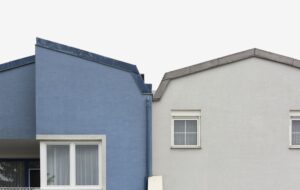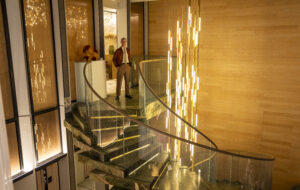|
|
||
|
Stanley Kubrick’s 2001 (1968) and Ridley Scott’s Alien (1979) offer the yin and yang of realism in science fiction film. 2001 depicts space travel as the highest refinement of engineering and design, a perfect blend of function and delight down to the last Olivier Mourgue armchair. Every polished bulkhead, every user interface, has a backstory of meticulous real-world research and development by brilliant minds. The crew, too, are superlative professionals – postdoctoral, capable, preternaturally calm. Locked in final struggle with the silicon intelligence that has killed all his colleagues, Dr David Bowman (Keir Dullea) doesn’t even raise his voice. In Scott’s Alien, whatever design virtuosity the doomed ship Nostromo once exhibited has been lost in the course of years of slapdash maintenance. The crew are underpaid and underwashed. Everything from the high technology to the food and industrial relations is dysfunctional. The entire film is one long workplace accident (the sequel even opens with the ensuing paperwork). Alien is dirty SF; 2001 is clean. They are both, xenomorphs and monoliths aside, very like reality, but seen from different sides. The science fiction artwork of Chris Foss is a consistent synthesis of these two perspectives. Foss’ career began at the tail end of the 1960s, after 2001 but before Alien. He had seen Kubrick’s Odyssey and it had left him deeply impressed, by its colour and stark grandeur, a stark contrast to drab, ramshackle postwar London. By the time Alien came along a decade later, Foss had completely reshaped the look of science fiction – indeed, he was a visual designer for the film, leaving after Scott took over as director. Rian Hughes, introducing this comprehensive collection of Foss’ art, calls the Foss aesthetic “the defining template for how we picture the hardware of tomorrow”. Foss’ medium was book covers, hundreds of them. The cover of a science fiction novel has particular tasks – it is, more so than non-genre fiction, an entrée for the imagination, which gives a foretaste of the promised banquet for the mind’s eye. Still, they are often formulaic, and then and now similar sleek spaceships firing lasers appear time and time again. But Foss’ spaceships are different – not simply a different breed, they are all different from one another. He took the inverted challenge of designing for unknown technologies in a vacuum and produced a mind-boggling array of unlikely shapes for his space vehicles. There are a few pointy rockets in Hardware, but also spheres, wasp-waisted peanuts, deep-sea bivalves, flying wedges, steel blimps, stacks of boxes and much else besides. These are given fabulous black-and-bold zebra stripes or checks and smatterings of illegible script; they drift through surrealist starscapes, over tropical alien landscapes or above equally outlandish city skylines. But despite their often bizarre appearance, Foss spaceships are characterised by an evolved realism that makes them uncanny and memorable. Their details are authentic and confident; each vent, antennae and stencilled warning looks completely at home in a wildly unfamiliar form governed by unknown constraints. So many of these ships look properly lived in, not fresh off the slipway like Kubrick’s fleet – cables hang loose, dirt is building up in the cracks, paint looks reapplied. Some ships appear barely functional, skeletal survivors of forever wars. The imagination rushes in to provide stories for these vehicles; they look as if they’ve been places. The same aesthetic is evident in Foss’ work for submarine thrillers and Second World War stories, where the technology should be more familiar. His helicopters are curiously over-decorated, his battleships suspiciously top-heavy with radomes and missile clusters. His aesthetic is a kind of eye for the inaesthetic – the pragmatic, mysterious shapes that coalesce when practical or engineering concerns are all that matters – which he draws out and labours. You can see completely Fosslike forms in the vehicles at work in our own world: the ungainly skyscraper slabs of ocean-going container-haulers, the dinosaur hunch and maw of South American stripmining machines, the inscrutable Sant’Elia towers, domes and gantries of warships, the origami profiles of radar-defying fighter planes finessed by supercomputers. Foss can see the poetry of the machine. He understands the unnatural shape of things. Hardware is a magnificent tribute to an extraordinary artist. Hardware: The Definitive SF Works of Chris Foss. Edited by Rian Hughes and Imogene Foss, Titan Books, £24.99 |
Image Titan Books/Chris Foss
Words William Wiles |
|
|
||

















